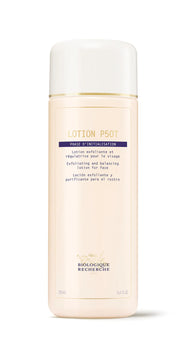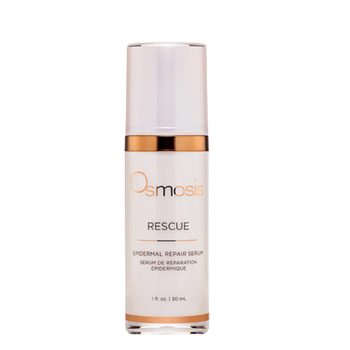If you’re someone who experiences persistent skin sensitivity, you understand the frustratingly uncomfortable feeling of heat under the surface of your skin and the irritating redness that comes along with it. You know you’re not alone, but it can still feel isolating to look in the mirror and notice redness or the small broken capillaries that may signify the early stages of rosacea.
At Glow, it’s not uncommon to speak with several of our clients each day about skin sensitization, but what is uncommon is the understanding of how to best manage inflamed, reactive skin. Sensitivity is experienced by more than 80% of all people at some point in their lives. Rosacea, specifically, is one of the most prevalent skin conditions among adults, with more than 20% of people between the ages of 30 and 40 beginning to see its telltale signs.

Although many of the beautiful faces we get to see at Glow are experiencing sensitivity, there’s a misunderstanding amongst those who are suffering that this is simply their “skin type”. While there are some precursors that make you more vulnerable, sensitized skin is actually a condition and not a lifelong sentence. Rosacea, on the other hand, is a condition which according to doctors cannot yet be cured, we do however have the tools and knowledge to help you manage your symptoms and even render them imperceptible.
So, what makes you more likely to have sensitized skin and how do you prevent it? You’re more likely to be predisposed to skin sensitivity or rosacea if you have fair skin or a Northern European heritage. Fairer skin is less resistant to external environmental aggressors like wind, cold weather, UV rays, and pollution. This is because it is less densely populated with the resilient pigmentation cells called melanocytes, that protect the skin from free-radical oxidation including UV rays and creates more density in the epidermal layers of the skin.  Fairer skin is also more prone to dryness (lack of oil) and dehydration (lack of water). The thinness of the skin and its susceptibility to sensitivity allows for what skin therapists call trans-epidermal water loss or TEWL for short. Since our skin is our body's first defence against foreign invasions like allergens and irritants, the outermost layer hosts the skin’s protective moisture barrier. The barrier is composed of fatty acids and lipids (oil) as well as beneficial microflora which is all balanced by a slightly acidic pH level. Since thinner skin is more susceptible to TEWL, the moisture barrier can be disrupted far more easily. When this imbalance occurs, visible symptoms that can be characterized by redness, heat, and even dermatitis may begin to appear. Although it’s more common to see a disordered moisture barrier or signs of rosacea and sensitivity in fair skin, it’s certainly not exclusive to those with a lighter skin tone. No matter your depth of pigmentation or heredity, you are still susceptible to experiencing either of these common conditions. If you’re someone who would like to better control and prevent sensitivity and rosacea flare-ups, you’ll need to know what can create a deficient skin barrier. Identifying and limiting exposure to triggers is phase one of three that will put you on the path to sensitization recovery.
Fairer skin is also more prone to dryness (lack of oil) and dehydration (lack of water). The thinness of the skin and its susceptibility to sensitivity allows for what skin therapists call trans-epidermal water loss or TEWL for short. Since our skin is our body's first defence against foreign invasions like allergens and irritants, the outermost layer hosts the skin’s protective moisture barrier. The barrier is composed of fatty acids and lipids (oil) as well as beneficial microflora which is all balanced by a slightly acidic pH level. Since thinner skin is more susceptible to TEWL, the moisture barrier can be disrupted far more easily. When this imbalance occurs, visible symptoms that can be characterized by redness, heat, and even dermatitis may begin to appear. Although it’s more common to see a disordered moisture barrier or signs of rosacea and sensitivity in fair skin, it’s certainly not exclusive to those with a lighter skin tone. No matter your depth of pigmentation or heredity, you are still susceptible to experiencing either of these common conditions. If you’re someone who would like to better control and prevent sensitivity and rosacea flare-ups, you’ll need to know what can create a deficient skin barrier. Identifying and limiting exposure to triggers is phase one of three that will put you on the path to sensitization recovery.
Phase 1 | Identifying & Avoiding Your Triggers
Both internal and external factors can contribute to inflamed skin and although we’re sure you’re aware that your diet can affect skin conditions, there may be a few other triggers that surprise you.
The External Factors:
- Moisture stripping skincare formulas, detergents and surfactants (such as over-drying cleansers)
- Over-exfoliation (using BHA’s, AHA’s and enzymes too often for your specific skin)
- Facial scrubs
- Too much UV exposure
- Centralized heating and air conditioning (this creates a drying environment)
- Dry, cold, or windy weather exposure
- Using too hot of water on your skin
- Chemicals such as chlorine in swimming pools or over-exposure to pollutants
- External allergens
The Internal Factors:
- Medication
- Vitamin & mineral deficiency (especially Omega’s)
- Overconsumption of vasodilating foods and beverages such as caffeine, alcohol, and spicy foods
- Internal dehydration
- Internal inflammation
- Internal allergens
- Hormonal fluctuation

Phase 2 | Repairing Your Skin Moisture Barrier
The second phase of treating inflamed skin (either sensitized or rosacea) is to calm and heal your skin’s moisture barrier. Without a balanced moisture barrier composed of beneficial fats, hydration, and healthy microflora, most corrective ingredients or treatments will be ineffective until its healthy balance is restored. At glow, we achieve results for our clients using a technique called Corneotherapy. This is a remedial skin treatment methodology with its core principle being the repair and maintenance of the skin barrier defence systems. Once the barrier is repaired, our skin achieves better results from other advanced treatments and active ingredients. We use the following ingredient formulas to repair the skin barrier within 1-3 months depending on the severity of your barrier deficiency.

The Osmosis Rescue serum is Glow’s most powerful force against skin inflammation. This epidermal repair serum has a remarkable ability to neutralize inflammatory toxins, calm existing irritation, activate epidermal wound repair, and provide the skin with the tools needed to permanently treat pores, age spots, and skin texture changes.

We use the Biologique Recherche Biosensible Moisturizing Masque as a powerful treatment application that weakens flushing and diminishes inflammation.

The ingredient complex in Biologique Recherches Masque Vernix mimics the vernix that is found on newborn baby skin. This waxy substance is produced by dedicated cells to protect the moisture barrier of the skin during development in utero. This silky feeling masque is best used as an overnight treatment that repairs the skin barrier while your cells are regenerating during sleep, or as a protective shield against environmental assault when you’re partaking in any outdoor activities.

The Masque VIPo2 is our favourite for instant relief with it’s cooling, soothing effect and ability to increase cellular oxygenation which fights against external aggressors and pollutant free-radicals.

Finally, if you suffer from sensitized skin, the Dermaviduals DMS High Classic Cream is a moisturizer that we deem invaluable for compromised skin barrier sufferers. Dermaviduals uses formulas based on Corneotherapy and if you know Glow, you know that this moisturizer is a favourite amongst our team and clients alike. The DMS in this coveted formula’s name stands for Derma Membrane Structure which is a patented formula that resembles the bilayer structure of the protective moisture barrier. It boasts barrier mimicking phosphatidylcholine, shea butter, ceramides, squalane, and natural moisturizers.
Phase 3 | Correct Inflammation Induced Cellular DNA Damage
After the skin barrier has been strengthened, or if you feel your skin is no longer sensitized and requires capillary repair and cellular strengthening, it’s time to improve the appearance of the skin and strengthen it against future sensitization.

For sensitive or rosacea-prone skin, we use a unique DNA enhancing vitamin C serum. The Catalyst AC-11 contains a patented formula that activates your natural zinc finger remodelling process, which is a critical part of cellular DNA repair. The unique combination of vitamin C, amino acids and minerals also encourages the skin to increase collagen and elastin production, promotes wound healing and improves sun protection. The benefits of this serum can be seen with skin tags, broken capillaries, fine lines and wrinkles, scarring, and pigmentation.
We hope this information on sensitization and rosacea prone skin empowers you to begin your path to skin healing, and serves as a blueprint for reaching your skin health goals. -xo Glow






Comments (0)
Back to Blog